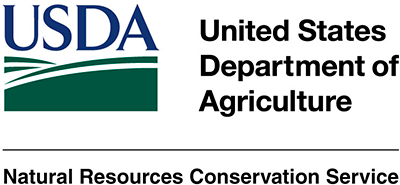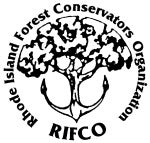See Sustainable Harvesting to learn about Best Management Practices (BMPs). Forestry professionals must follow these practices in order to meet RI forest cutting regulations and standards.
Appendix to the 2010 Rhode Island Forest Assessment and Strategies
Rhode Island Constitution
Article 1, §17 of the Rhode Island Constitution secures the right of the public to “the use and enjoyment of the natural resources of the state,” and directs the General Assembly to “provide for the conservation of the air, land, water, plant, animal, mineral and other natural resources of the state…and to adopt all means necessary and proper by law to protect the natural environment….” Tree and forest resources clearly fall within the Constitutionally directed protection of the natural resources of the state.
State Statutes
The Rhode Island General Assembly has enacted a number of statutes directly and indirectly governing the management of the state’s trees and forest resources. Elements establishing the legal framework for forestry in Rhode Island include:
Department of Environmental Management R.I. General Laws § 42-17.1 et seq. establishes a state Department of Environmental Management and authorizes it to “supervise and control the protection, development, planning, and utilization of the natural resources of the state… including… plants, trees…”
Within the R.I.DEM, the Division of Forest Environment is assigned responsibility for forest management, including “assisting other agencies and local governments in urban programs relating to trees, forests, green belts, and environment.” Pursuant to this responsibility, the Division operates the state’s Forestry Program, provides cooperative forest management, wildfire prevention and suppression, insect and disease control, and management of state owned forests. The Division works closely with the U.S. Department of Agriculture’s Forest Service, other units of DEM, municipalities, and private groups in pursuit of its forest management responsibilities.
Forested Wetlands
R.I. General Laws § 2-14-1 et seq. the Rhode Island Freshwater Wetlands Act, offers regulatory protection to approximately 75,000 acres of forest land that meet the statutory definition of a freshwater wetland. Alterations to wetland areas require permission from Rhode Island’s DEM’s Director. In general, the Freshwater Wetlands Program seeks to avoid or minimize permanent changes that negatively impact wetland values.
Activities may be permitted, permitted with stipulations, or denied, depending on their impacts upon the wildlife habitat, recreational, water supply, and other values of the wetland affected. Permit restrictions on cutting and clearing of vegetation, draining, watercourse alterations, and requirements for maintenance of vegetated buffers surrounding wetlands all help to protect the state’s forest resources.
Municipal Tree Wardens
R.I. General Laws § 2-14-1 et seq., requires municipalities to appoint a tree warden and charges the appointed official with responsibility for the “care and control” of trees and shrubs within public land and rights-of-way controlled by the municipality, and of portions of private trees that extend into or over public roads or grounds. Tree wardens must be licensed arborists, are authorized to prune or remove hazardous trees at public expense, cooperate with the R.I.DEM in the suppression of pests and diseases, and propose regulations governing the care and preservation of suitable trees. Several municipalities have adopted tree ordinances that further detail the responsibilities of the local tree warden.
A-3 Criminal and Civil Penalties for Unlawful Cutting or Vandalism to Trees
R.I. General Laws § 11-44-2 et seq., prohibits persons from uprooting, cutting down, or otherwise injuring or damaging trees or underwood on land of another, without permission of the owner, and establishes a penalty of up to one year’s imprisonment or a fine of (the lesser of) triple the monetary damage or $1,000 plus compensation of triple damages to the wronged property owner. R.I. General Laws § 34-20-1 creates liability for civil damages for the unauthorized cutting of trees or wood on the land of other persons.
Licensing of Arborists
R.I. General Laws § 2-19-1 et seq., establishes definitions, standards, examination, and licensing requirements for individuals and business entities engaging in the practices of “pruning, trimming, spraying or repairing fruit, shade and ornamental trees.” The R.I.DEM is authorized to establish rules and regulations governing the practice of arborists.
Protection of Trees and Plants Generally; Replacement of Trees Removed on Public Land
R.I. General Laws § 2-15-8 et seq., requires that permits be obtained from the local tree warden, park commission, or state department having jurisdiction prior to the cutting or removal of any tree or shrub, or the burning of rubbish or debris on public lands. Any person, firm, or governmental entity that removes or substantially damages any tree on public land must replace the tree with substantially equivalent tree or trees, having the sum of the diameters equal to twice that of the tree removed or damaged. Public utility work in accordance with a properly approvedtrimming and replacement program is exempt from the requirement.
Right-of-Way Tree Planting
R.I. General Laws § 45-2-43 authorizes cities and towns to appropriate resources under the direction of the tree warden for planting shade trees upon (private) land adjoining a public right-of-way at a distance of up to 20 feet. This section allows municipalities the discretion to spend public funds to plant street trees on private land provided that the tree will function as a public tree by improving, protecting, shading, or beautifying the public way. This option allows municipalities to involve private landowners in the stewardship of what remain essentially street trees and gives flexibility to site new trees away from utility corridors, avoiding the need for severe pruning and improving their vitality and beauty. The City of Newport has utilized this authority in its tree planting and replacement programs and anticipates significant maintenance cost savings over the long term.
Right To Farm
R.I. General Laws § 2-23-1 et seq., finds that agricultural operations are valuable to the state’s economy and general welfare and that they are being adversely affected by the random encroachment of urban land uses throughout rural areas of the state. The Act declares it to be policy of the state to promote an environment in which agricultural operations may be safeguarded against nuisance actions arising from conflicts between agricultural operations and urban land uses. The statute defines agricultural operations to include “forestry”, and provides (generally) that no agricultural operation shall be found to be a public or private nuisance due to alleged objectionable odors, noise, dust, or use of agri-chemicals associated with generally-accepted agricultural practices. The Act further provides that no city or town may enforce any ordinance pertaining to the construction, location or maintenance of places for the keeping of animals, against any agricultural operation as defined in the Act.
A-4 Registration of Wood Cutting Operations
R.I. General Laws § 2-15-1 et seq., requires that any persons, firms, and corporations cutting standing or growing trees for commercial forest products must be registered as a woods operator with the R.I. Department of Environmental Management, and, further, such persons must file with the R.I.DEM a notice of intent to cut or saw at least five days prior to the cutting or sawing, and must utilize best management practices while harvesting trees.
State Guide Plan
R.I. General Laws Chapter 42-11 establishes a Statewide Planning Program, and requires the preparation and maintenance of a State Guide Plan for the physical, economic, and social development of the state. In addition to this Urban and Community Forestry Element, the State Guide Plan includes related elements that establish a policy framework for management of the state’s forest resources: Forest Resources Management Plan (1984), Greenspace and Greenways Plan (1994), Outdoor Recreation Plan (2004), and State Land Use Policies and Plan (1989). Local comprehensive plans must be consistent with the State Guide Plan’s policies.
Local Comprehensive Planning
R.I. General Laws Chapter 45-22.2 requires all municipalities to prepare, adopt, and periodically update local comprehensive plans providing a rational basis for decisions regarding the long-term physical development of the municipality. A Natural Resources Element, which inventories and sets policies “for the protection and management of significant natural resources, including natural vegetation systems” is a required part of the comprehensive plan. Comprehensive plans must be based upon citizen input, must be internally consistent in their goals and policies, and must be consistent with the State Guide Plan. Local zoning decisions must be consistent with the approved local comprehensive plan’s land use element.
Municipal Zoning Authority
R.I. General Laws § 45-24-27 et seq. requires, and establishes minimum standards for, all municipal governments to enact zoning ordinances. Ordinances are intended to regulate “the nature and the extent of the use of land for residential, commercial, industrial, recreational, agricultural, open space or other use….as the need for land for those purposes is determined by the city or town comprehensive plan.” A complete update of the state’s zoning enabling act was adopted in 1991. In addition to establishing permitted future uses of land that accord with adopted plans, the act authorizes communities to have “…requirements for: the density and intensity of use, …landscaping, …open space, … and buffers, …and, permitting, prohibiting, limiting, and restricting development in …designated significant natural areas.” Municipalities may also adopt special provisions including incentive zoning, transfer of development rights, and regulation of “development adjacent to …public greenspaces…or valuable natural resources.” As the principal governmental control over future usage of land, local zoning ordinances have great impact on Rhode Island’s forests.
Subdivision and Land Development Project Review
R.I. General Laws § 45-23-25 et seq., completely updated in 1992, requires all municipalities to develop and adopt regulations controlling the process of land subdivision and land development within their boundaries. Among the purposes of municipal subdivision/land development project review is “promoting the protection of the existing natural and built environment and the mitigation of all significant negative impacts of any proposed development … .” Municipalities are authorized to enact a master planning review process for approval of new development and subdivision projects and to adopt requirements for physical design, including: “…open space, landscaping,… and the relationship of proposed developments to natural and man-made features of the surrounding neighborhood.” Ordinances may also include public A-5 design and improvement standards for “landscaping, and …soil and erosion control.” Standards for dedication of private land, or payment of a fee in lieu thereof, in connection with new development are also authorized. Communities may utilize the powers and authorities conferred by the Land Development and Subdivision Review Act to require protection of existing tree resources and to specify requirements for replacement or new tree resources in connection with new development.
Watershed / Forestland Acquisition
R.I. General Laws § 46-15-3 et seq., entitled the Public Drinking Water Supply System Protection Act of 1997, is primarily a drinking water protection statue that also benefits the forest resources of the state. It requires that each public drinking water supplier add a charge to be known as a “water quality protection charge” to every water bill issued. The Act requires that not less than 55% of the funds shall be spent for acquisition of land or rights in land or physical improvements to acquired land to protect the quality of raw water of the water supply system. The acquisition of land often involves the acquisition of forestlands that become protected lands as described in Part 2, through the Watershed Land Acquisition Program, administered by the Rhode Island Water Resources Board.






